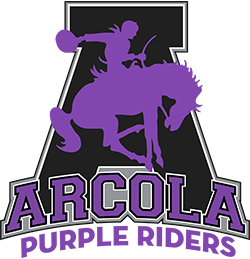At the January board meeting, High School Assistant Principal Amber Behrends made a presentation to the Arcola School Board on dual language programs primarily focused at the elementary school level. For a small community, Arcola has always been a diverse community with many students coming from Hispanic families. Some of those students are what are considered to be English Learners (EL). English Learners can be defined as students learning to speak English while primarily speaking Spanish. When a school has a higher percentage of EL students, the school district must employ additional staff to provide both Spanish Language Arts (students are taught part of their Literacy in their native language, Spanish) and also English Second Language (ESL) services. ESL services are designed to promote students’ English language development and includes skills development in listening, speaking, reading, and writing.
For many years, the percentage of EL students in the district hovered at around 10-12%. Since 2018, the district has seen a steady increase in the percentage of EL students. The percentage of EL students has grown from 12.8% in 2018 to a current number of over 25%. The elementary school (Grades PreK – 6) has around 30% of the student body considered to be English Learners.
The goal of a dual language program is to develop bilingual, biliterate, and multicultural students. Dual Language delivers academic content in the partner language while Spanish Language Arts and ESL are incorporated into the daily schedule. In this program, students read, write, and develop higher-order thinking skills in both languages.
A dual language program in the elementary school would eventually include a classroom section at each grade level that is taught in both Spanish and English (hence the “dual language”). There are different models but the most common is the 50/50 approach where 50% of the language is in English and the other 50% is in Spanish. Two-way immersion classrooms have both English dominant and Spanish dominant students in the classrooms. Obviously, a program like this would need to start at kindergarten and eventually build each year as students’ progress. One big change that would come from a shift to this program is that instead of EL students being pulled out of the classroom for Spanish Language Arts and ESL services, they would receive them right in the class with the same teacher.
The reason the district is beginning the discussion on this new approach is that the district continues to see growth in the number of EL students in the district. As stated earlier in 2018, the district EL percentage was 12.8%. Considering those kinds of numbers, if the district has 50 kindergarten students, there would only be 6 students considered EL. A dual language section per grade level probably would not make a lot of sense at that point. With 30% EL percentage, that same grade level with 50 students now has around 12-15 students considered EL students and a dual language section seems much more viable.
The dual language program is not just about providing support to the EL student population. There are potentially many benefits for students coming from homes that speak only English as well. A majority of our students take Spanish at the high school level in an attempt to learn Spanish. This would provide an opportunity for students in the dual language classroom to learn Spanish at an age and in a manner that research indicates students learn language most effectively.
The district is just beginning to start the conversation about dual language. There will be a lot of conversations with parents and families, staff and the board of education before a decision will be made whether or not to move forward with a dual language program. But, based on the significant growth in numbers, it is a conversation worth having.

